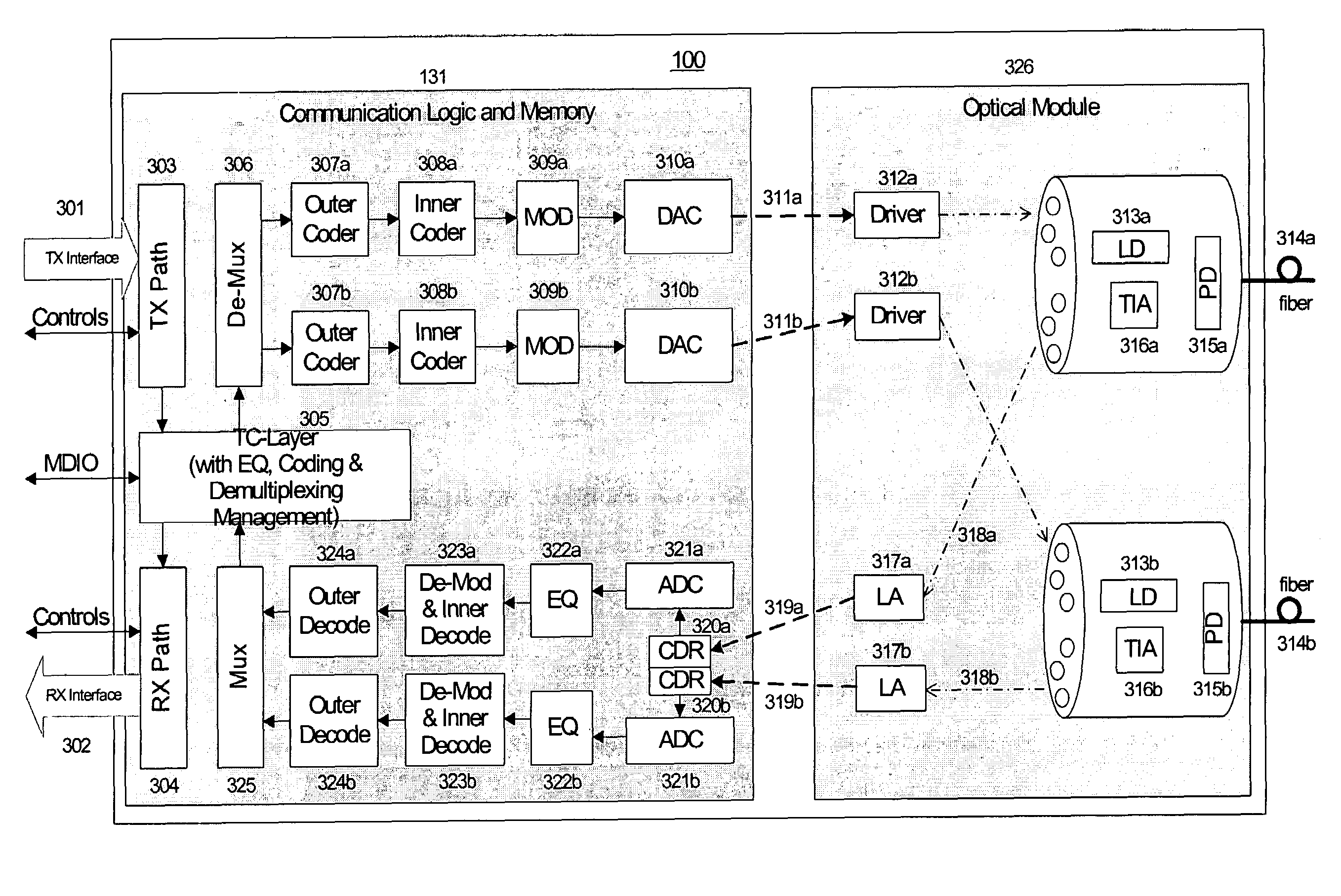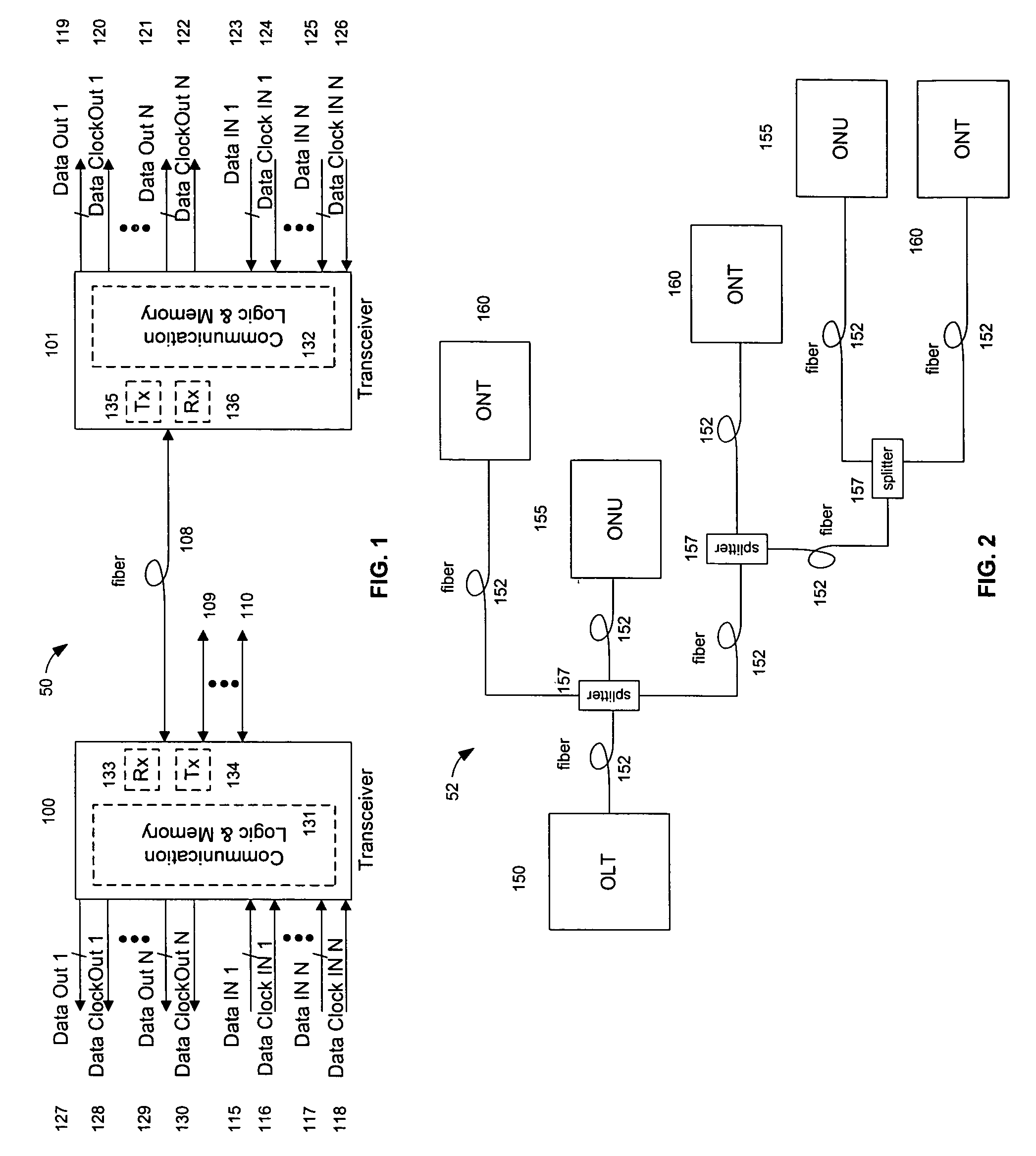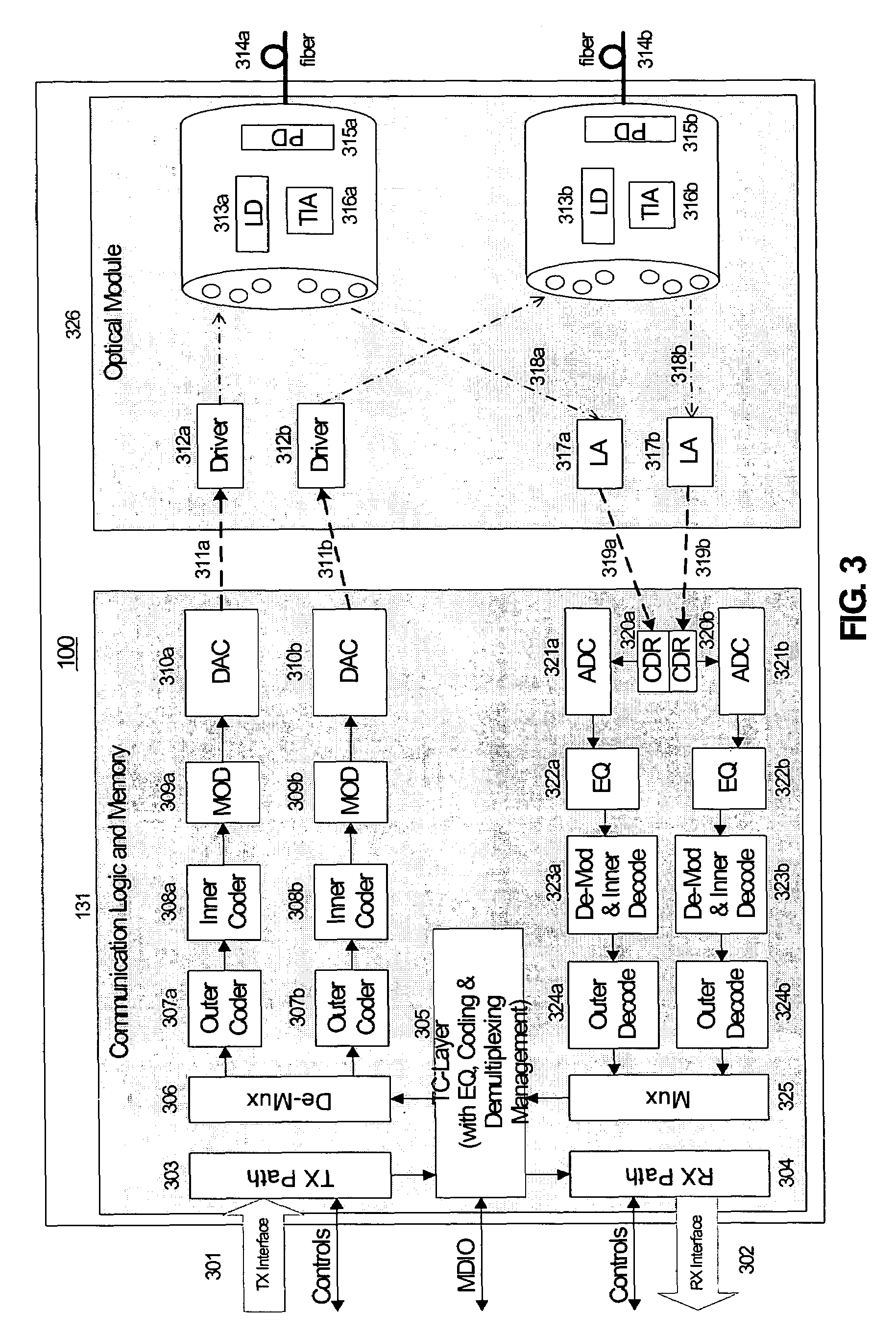System and method for performing high-speed communications over fiber optical networks
a fiber optic network and high-speed communication technology, applied in the field of optical fiber communications, can solve the problems of network performance constraint and greater temporal distortion, and achieve the effects of reducing the effect of temporal distortion, increasing data throughput, and increasing reach
- Summary
- Abstract
- Description
- Claims
- Application Information
AI Technical Summary
Benefits of technology
Problems solved by technology
Method used
Image
Examples
Embodiment Construction
[0035]Referring to FIG. 1, wherein like reference numerals designate identical or corresponding parts throughout the several views, a high-level fiber optic data network 50 includes a first transceiver 100 in communication with a second transceiver 101 via a fiber 108. The first transceiver 100 and the second transceiver 101 include transmitter circuitry (Tx) 134, 135 to convert electrical data input signals into modulated light signals for transmission over the fiber 108. In addition, the first transceiver 100 and the second transceiver 101 also include receiver circuitry (Rx) 133, 136 to convert optical signals received via the fiber 108 into electrical signals and to detect and recover encoded data and / or clock signals. First transceiver 100 and second transceiver 101 may contain a micro controller (not shown) and / or other communication logic and memory 131, 132 for network protocol operation. Although the illustrated and described implementations of the transceivers 100, 101 inc...
PUM
 Login to View More
Login to View More Abstract
Description
Claims
Application Information
 Login to View More
Login to View More - R&D
- Intellectual Property
- Life Sciences
- Materials
- Tech Scout
- Unparalleled Data Quality
- Higher Quality Content
- 60% Fewer Hallucinations
Browse by: Latest US Patents, China's latest patents, Technical Efficacy Thesaurus, Application Domain, Technology Topic, Popular Technical Reports.
© 2025 PatSnap. All rights reserved.Legal|Privacy policy|Modern Slavery Act Transparency Statement|Sitemap|About US| Contact US: help@patsnap.com



